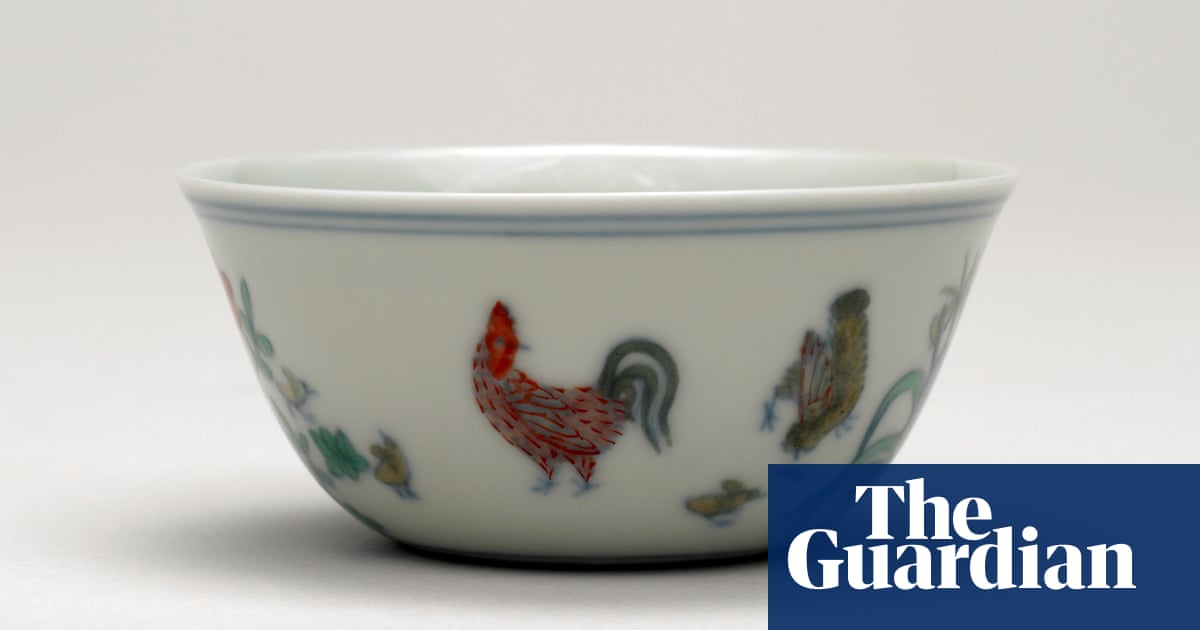The British Museum has been given a private collection of Chinese ceramics worth about £1bn, the highest-value object donation in UK museum history.
The 1,700 pieces dating from the third to the 20th century have been given permanently by the trustees of the Sir Percival David Foundation. They had been on loan to the London museum since 2009.
It means the British Museum now holds one of the most important collections of Chinese ceramics of any public institution outside the Chinese-speaking world, with approximately 10,000 items.
George Osborne, the chair of the museum, said he was thrilled by the âblockbuster decisionâ.
âThis is the largest bequest to the British Museum in our long history. Itâs a real vote of confidence in our future, and comes at a highly significant moment for us, as we embark on the most significant cultural redevelopment of the museum ever undertaken,â he said.
Porcelain was first produced in China about AD600. Chinese ceramics, by far the most advanced in the world, were made for the imperial court, the domestic market or for export.
Percival David was a visionary British businessman whose passion for China inspired him to build his collection. Throughout his life he collected ceramics in Europe, Japan, Hong Kong and China.
David, who died in 1964, had been determined to keep his collection on public view to inform and inspire people.
Writing in the journal, the Transactions of the Oriental Ceramic Society, in 1952, he said: âThe private collector justifies his existence by providing very necessary pabulum for the art critic and the art expert.
âIn our particular field, this could be translated into whetting their mental appetites with âproblem piecesâ, pieces which may prove one day to be duds after all, or else emerge as key specimens of some newly identified class of ware of great significance.â
Highlights from the collection include the âDavid vasesâ from 1351, whose discovery revolutionised the dating for blue-and-white ceramics. It also includes a âchicken cupâ used to serve wine for the Chenghua emperor in the 15th century and Ru wares made for the Northern Song dynasty court in about 1086.
The artist Edmund de Waal, who is known for his large-scale installations of porcelain vessels, said encountering Davidâs collection had been the âfoundational experienceâ for generations of potters, scholars and students.
De Waal said he first saw the pots at the age of 16 and they had stayed with him for more than three decades. âWho knows who will have their lives changed in the future?â he said.
Davidâs connection with the British Museum dates back to 1929, when he donated a dated Ming shrine.
Colin Sheaf, the chair of the Sir Percival David Foundation of Chinese Art, said: âItâs exactly 100 years since Sir Percival David made his first visit to China. His inaugural trip engendered a lifelong love of its art and culture, especially the imperial porcelains made for the use of the emperor and his court, which inspired him to assemble his unparalleled private collection.
âItâs entirely fitting therefore that, in this centenary year, the trustees of his foundation should resolve that the most suitable permanent home for his collection is the British Museum, where â on loan for 15 years â it has attracted millions of visitors every year, accomplishing all the charitable purposes of the foundation.â

